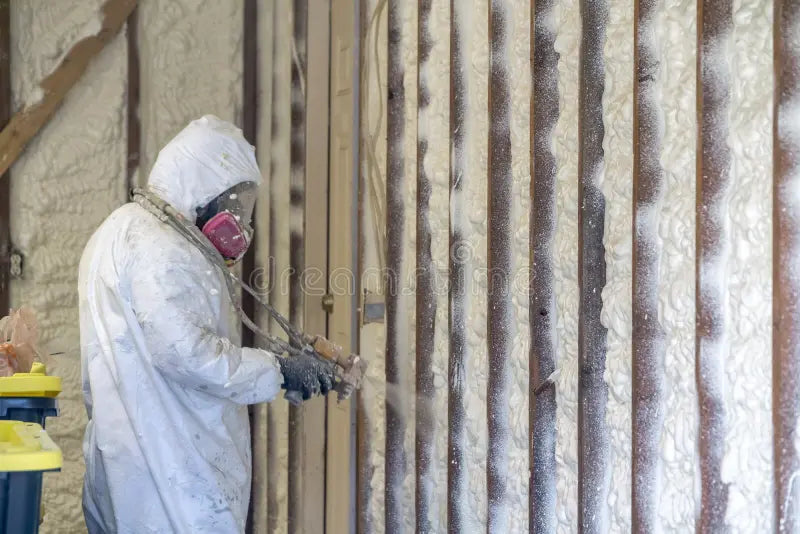What is the Use of Closed Cell Kits?
In the world of insulation, closed cell spray foam kits are a popular choice for many homeowners and contractors. These kits offer a myriad of benefits, making them a versatile and effective solution for a variety of insulation needs. In this blog, we’ll delve into the uses of closed cell kits, how to tell the difference between open and closed cell foam, and why closed cell foam might be the best choice for your insulation project.

Understanding Closed Cell Spray Foam
Vega Bond V600 spray foam is a type of insulation known for its high density and superior insulating properties. It is created by mixing two chemical components that react to form a rigid, closed-cell structure. This structure traps gas bubbles within the foam, providing excellent thermal resistance, or R-value. The closed cells in the foam are tightly packed, making it impervious to air and water.
What is the Use of Closed Cell Insulation?
Closed cell insulation has many applications due to its excellent thermal resistance and moisture barrier properties. Here are some common uses:
- Home Insulation: Closed cell spray foam is ideal for insulating walls, roofs, and floors. It provides a high R-value per inch, offering superior thermal resistance compared to other types of insulation.
- Metal Buildings: Closed-cell foam is often used in metal buildings due to its rigidity and ability to adhere well to metal surfaces. It helps reduce heat transfer and provides a moisture barrier, preventing rust and corrosion.
- Attics and Basements: These areas benefit from closed cell insulation because they can seal off cracks and crevices, preventing air leaks and water infiltration.
- Soundproofing: Closed-cell foam's dense nature also effectively reduces noise transmission, making it a good choice for soundproofing rooms.
How to Tell the Difference Between Open and Closed Cell Foam?
Distinguishing between open and closed cell foam is crucial for selecting the right insulation. Here are some key differences:
- Density: Closed-cell foam is denser than open-cell foam. This density gives it a higher R-value and makes it more rigid.
- Cell Structure: In closed cell foam, the cells are completely closed and packed together tightly. Open cell foam, on the other hand, has cells that are not completely closed, allowing air to fill the gaps.
- Moisture Resistance: Closed-cell foam is impermeable to water, making it an excellent choice for areas prone to moisture. Open-cell foam can absorb water, which may lead to mold and mildew issues.
- Cost: Closed-cell foam is generally more expensive than open-cell foam due to its higher density and better insulating properties.
Open Cell vs. Closed Cell Foam in Metal Buildings
When insulating metal buildings, choosing between open-cell and closed-cell foam can significantly impact the building’s efficiency and durability.
Closed Cell Foam:
- Provides a better moisture barrier, preventing rust and corrosion.
- Has a higher R-value, offering superior thermal resistance.
- Adds structural strength to the building due to its rigidity.
Open Cell Foam:
- It is less expensive than closed-cell foam.
- It can fill larger gaps and cavities due to its expansive nature.
-
Provides good sound insulation but is less effective as a moisture barrier.

Closed Cell R-Value
The R-value of closed-cell foam insulation measures its thermal resistance. Closed-cell spray foam typically has an R-value of about 6 to 7 per inch, which is significantly higher than that of open-cell foam. This high R-value means that closed-cell foam provides excellent insulation with less material, making it a highly efficient option for both residential and commercial applications.
FAQs
What is closed cell insulation used for?
Closed cell insulation is ideal for walls, roofs, floors, attics, basements, and metal buildings. It also provides thermal insulation, moisture barriers, soundproofing, and structural strength.
Should I use open-cell or closed-cell foam?
Your choice depends on your specific needs. Closed-cell foam offers better thermal resistance, moisture protection, and structural support, while open-cell foam is more cost-effective and suitable for filling larger spaces.
What is the difference between open-cell and closed-cell rubber?
Open cell rubber has interconnected cells that allow air and moisture to pass through, making it softer and more flexible. Closed-cell rubber has sealed cells, making it denser, more rigid, and impervious to air and moisture.
What are closed cells?
Closed cells are cells within foam that are completely enclosed and do not connect with other cells, making the foam impermeable to air and moisture.
What is closed-cell rubber?
Closed-cell rubber is a type of rubber with a closed-cell structure, making it dense, rigid, and resistant to water and air infiltration. It is commonly used in insulation, flotation devices, and gaskets.
What is the application of closed cell foam?
Closed cell foam is used in insulation, moisture barriers, soundproofing, packaging, flotation devices, and cushioning. It is versatile and can be applied in various industries, including construction, automotive, and marine.
Will closed-cell foam absorb water?
No, it is designed to be impervious to water, making it an excellent choice for areas prone to moisture.
What are the properties of closed cell foam?
Closed cell foam is dense, rigid, impermeable to air and water, has a high R-value, and provides excellent thermal insulation and structural support.
Spray Insulation Kits: DIY Solutions
For those looking to tackle insulation projects themselves, spray insulation kits offer a convenient and cost-effective solution. A DIY spray foam insulation kit typically includes everything you need to apply closed cell foam insulation. These kits are designed for ease of use, allowing homeowners to achieve professional-quality results without the need for specialized equipment.

Advantages of DIY Spray Foam Kits:
- Cost-Effective: DIY kits can be more affordable than hiring a professional contractor.
- Convenience: Kits include all necessary components and instructions for application.
- Control: Allows homeowners to apply insulation where and how they need it.
Cost of Spray Foam Insulation
The cost of spray foam insulation can vary based on factors such as the type of foam (open cell vs. closed cell), the size of the area to be insulated, and labor costs if you hire a professional. Generally, closed cell foam is more expensive due to its higher density and superior insulating properties.
Factors Affecting Spray Foam Insulation Cost:
- Type of Foam: Closed cell foam is more expensive than open cell foam.
- Area Size: Larger areas require more material and labor, increasing costs.
- Professional Installation: Hiring a contractor adds labor costs but ensures professional results.
Conclusion
Closed cell spray foam kits are an excellent choice for various insulation needs due to their high R-value, moisture resistance, and structural benefits. Whether insulating a home or metal building or looking for a DIY solution, closed-cell foam offers superior performance compared to open-cell foam. Understanding the differences between open and closed cell foam helps you make an informed decision that best suits your project requirements.
For high-quality closed cell spray foam kits and expert advice, trust VB Insulation. We provide top-notch insulation products and services to ensure your space is well-protected and energy-efficient.




